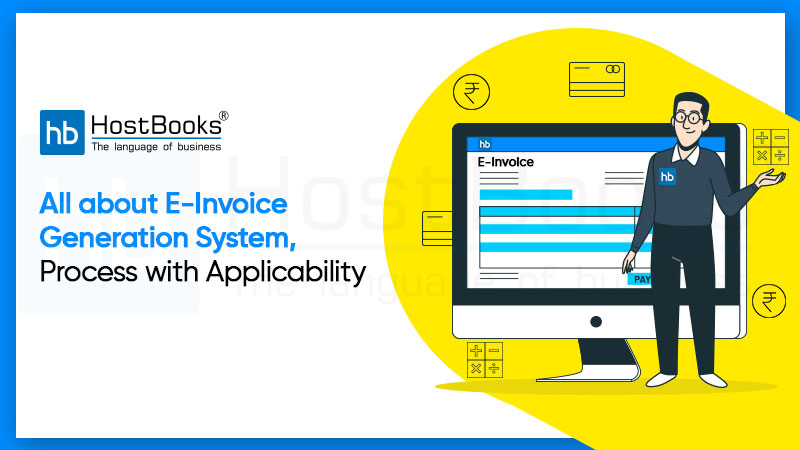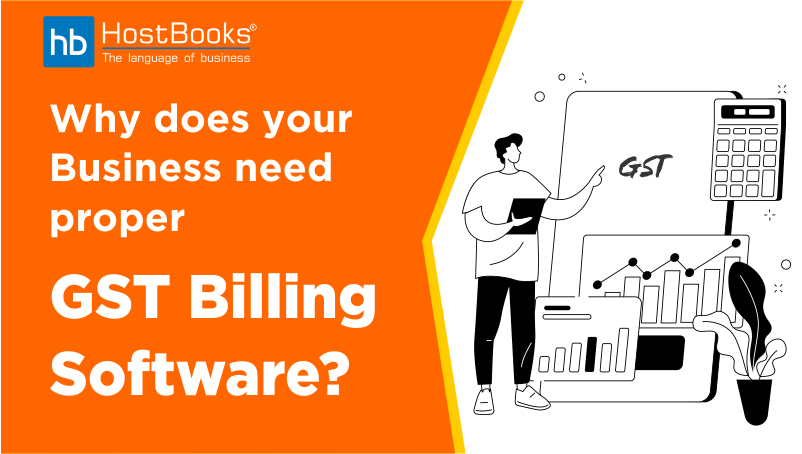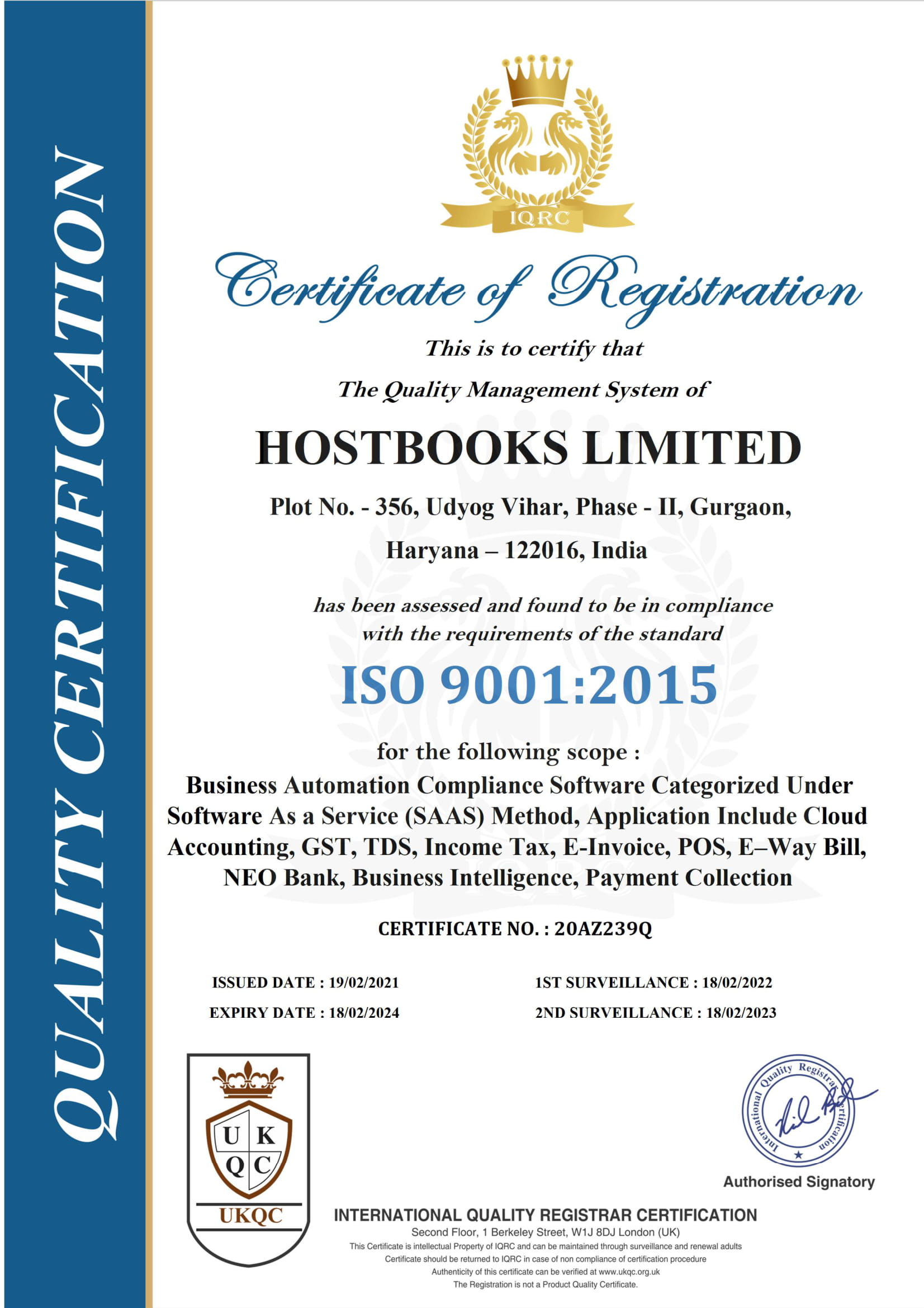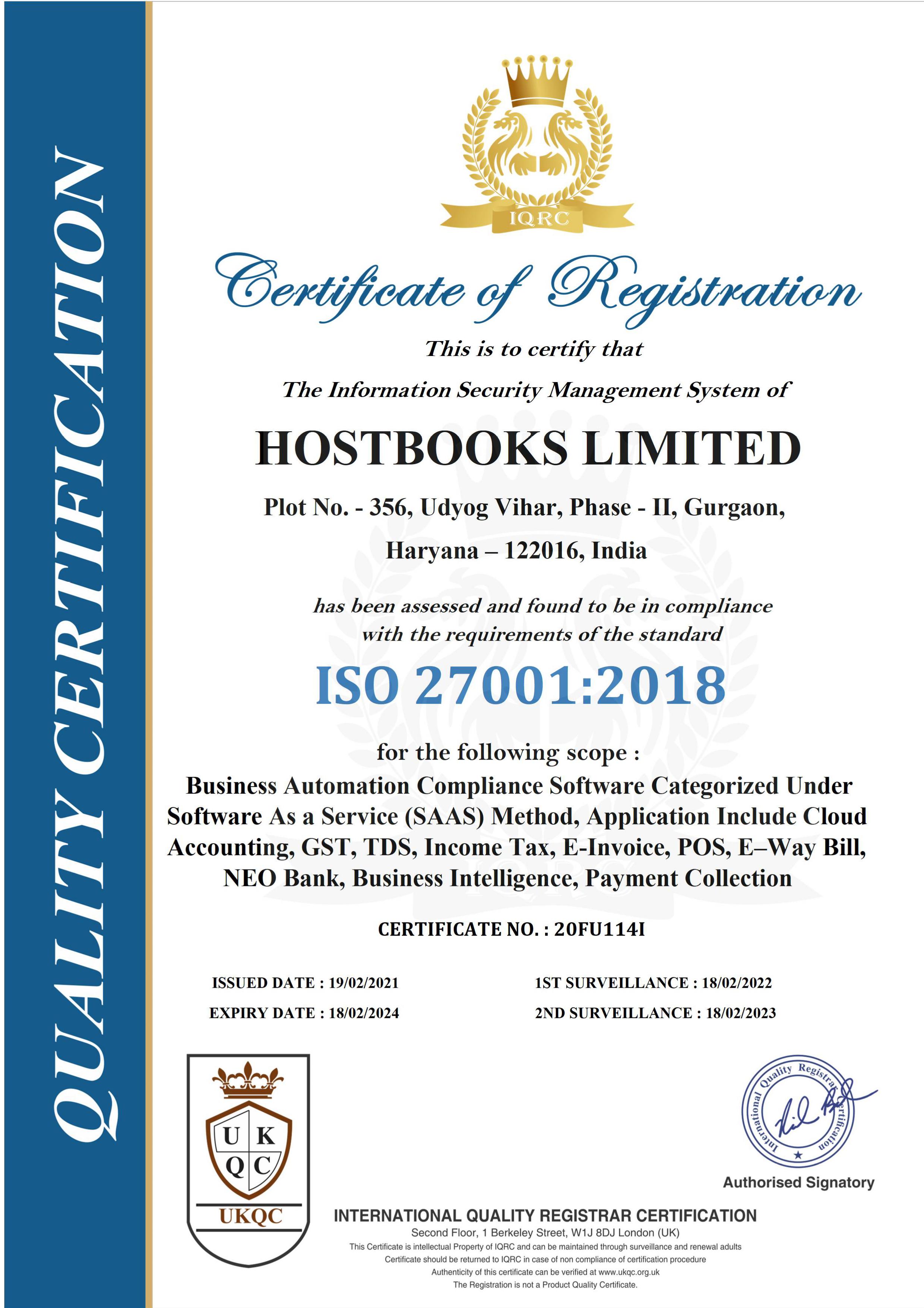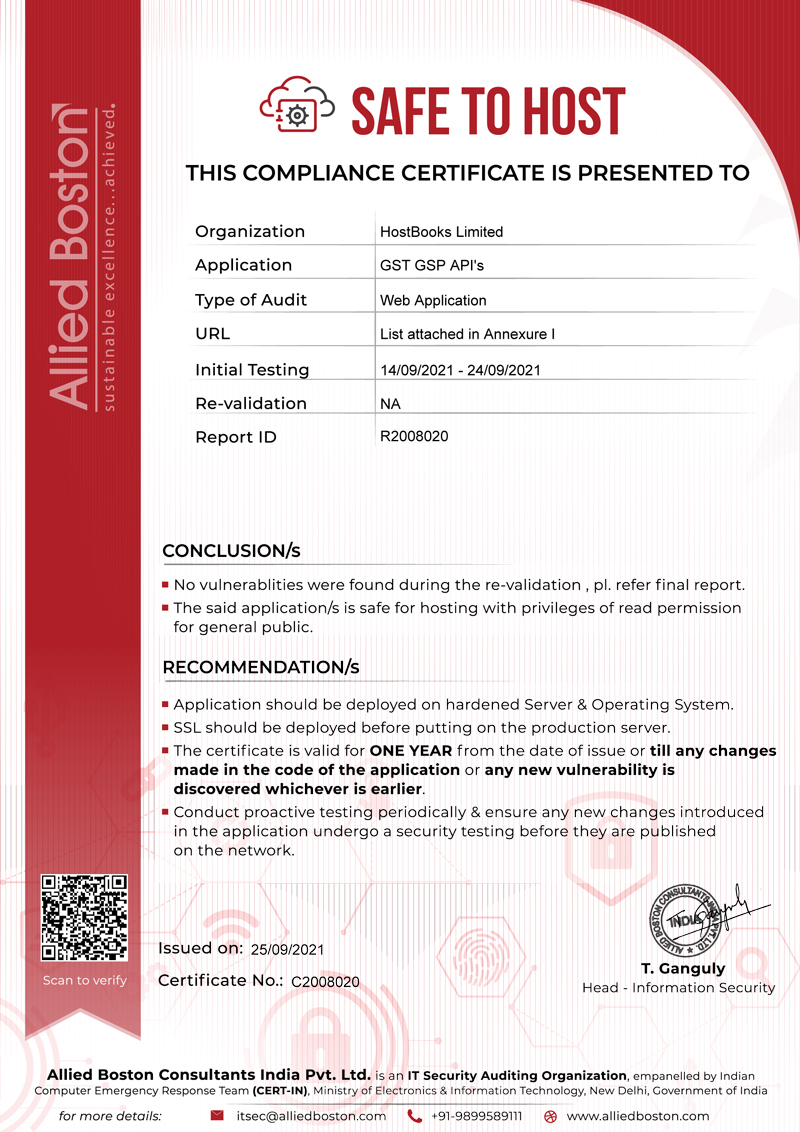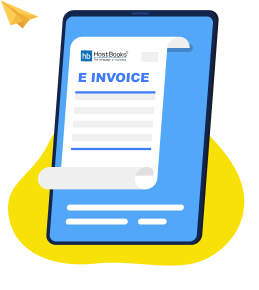
GSTR-9A: Eligibility, Due Date, Filing Details, and Late Fees
November 9, 2020
Union Budget 2021 Highlights: Important Points & Key Takeaways
February 2, 2021A new GST e-invoice scheme was launched by the government in which companies with a revenue of Rs 500 crore and above will produce all invoices as of 1 October 2020 on a single government portal. The turnover threshold for companies had earlier been set at Rs 100 crore.
For now, e-invoicing has been launched on a voluntary basis beginning in January 2020, but it will become mandatory from April 2020 and if you want to integrate e-invoicing into your business processes, before starting this process, you need to know what there is to know.
What is e-invoicing?
‘E-Invoicing’ or ‘digital invoicing’ is a method wherein B2B invoices are authenticated electronically through GSTN for similar use at the not unusual GST portal. Within the electronic invoicing system, a wide identification variety would be issued towards every invoice by using the Invoice Registration Portal (IRP) to be managed by the GST community(GSTN). The first IRP became released via the country-wide Informatics Centre at invoice.gst.gov.in. All invoice statistics may be transferred from this portal to each GST portal and e-manner bill portal in actual-time. Therefore, it’s going to remove the want for guide records entry while filing GSTR-1 return as well as the technology of part-A of the e-way bills, as the records are handed without delay with the aid of the IRP to the GST portal.
Invoicing Process
E-invoice calls for you to generate the bill facts in the prescribed layout (JSON), both the usage of the ERP/commercial enterprise management software program or offline device supplied through the portal. And, then upload it to the IRP which in flip validates and authenticates the bill information with IRN and QR code.
The technique to generate an e-bill is stated underneath:
- Generate the e-bill in a prescribed layout the use of the software program answers/commercial enterprise control software program or use the offline tool supplied with the aid of the portal
- Login and upload the e-invoice record to IRP. If the software program is integrated with IRP via GSP, the upload of the JSON file may be automatic, which means the system sends the specified details without delay to the IRP portal
- The IRP portal validates the key bill factors and upon a hit validation, the bill facts are authenticated with IRN variety and QR code
Subsequent, you can download or receive the e-bill report together with the IRN for the invoices that have been uploaded through you. For the usage of the details received, replace your invoice with the IRN range and QR code. In the case of an integrated surrounding of ERP and IRP via GSP, the software program will robotically fetch and print such details.
E-Invoicing is increasingly more mandated by governments throughout the globe particularly due to GST evasion.
Tax leakage and fraud and the use of fake invoices were an issue the government is attempting to combat even before the GST technology. E-invoicing in India is proposed to position an end to this through mandating authorization of each invoice from the authorities portal. Real-time bill reporting discourages subsequent fraudulent adjustments/modifications.
except for plugging the tax leakage, the implementation of the e-invoicing beneath GST will be useful for the taxpayers as nicely.
How e-invoice get started?
In May 2019, the first committee was set up to address the usability of e-invoicing and to prepare an e-invoicing development strategy to suggest global implementation for India. Several draughts of the E-Invoicing requirements have been published since the committee made its recommendations and the E-Invoice Schema was eventually launched in January 2020. As of 1 April 2020, the mandate was to go Online. However, on 14 March 2020, the mandate was pushed to the 39th GST Council meeting on 1 October 2020. The mandate eventually went LIVE in a staggered manner from 1st October 2020.
In fact, owing to GST avoidance, e-invoicing is increasingly required by governments around the world.
Even before the GST period, tax leakage and bribery using false invoices were a concern that the government was seeking to fight. In India, e-invoicing is proposed to bring an end to this by mandating permission from the government portal for any invoice. Invoice reporting in real-time discourages subsequent fraudulent modifications/adjustments.
In addition to plugging the tax leak, the introduction of GST e-invoicing is also advantageous for taxpayers.
The e-invoicing mechanisms are user-friendly. Users may benefit from advantages like Electronic Way Bill auto-generation, GST return invoice auto-reporting, etc. E-invoicing would encourage interoperability & standardization, resulting in the reduction of disputes among transacting parties. Not just this, but it will increase payment times and decrease the cost of processing.
Coping with the new GST Regime is very difficult for SMEs. The e-invoicing initiative is also intended for companies that are planning to list their enterprises under the GST scheme but are reluctant due to the current difficulties involved. Under GST, electronic invoicing is direct and comes with multi-faceted GST Council support.
Key features
- One-time reporting on all the GST filings of invoicing data
- Seamless generation of Part A and Part B E-way Bill with slip
- Interoperability between different applications ensures the standard invoicing method
- Tracking the invoices prepared by the supplier in real-time
- During reconciliation, reduced invoice mismatches
- Easy and precise claim from ITC
Advantages of e-invoicing
By using the e-invoice initiated by GSTN, businesses would have the following advantages:
- In order to reduce mismatch errors, e-invoice solves, and plugs a significant gap in data reconciliation under GST.
- E-invoices generated by one software can be read by another software, enabling interoperability and helping to reduce errors in data entry.
- The e-invoice enables real-time tracking of invoices prepared by the supplier.
- The relevant details of the invoices would be auto-populated in the different returns, particularly for generating Part-A of e-way bills, backward integration, and automation of the tax return filing process.
- Faster availability of genuine credit for input taxes.
- Less scope for tax authorities to perform audits/surveys, as the information they need is accessible at the level of the transaction.
The e-invoice mechanism
Currently, the e-invoice mechanism is restricted to defining the schema and the interoperability standard for accounting or billing software. Using the stated schema for accounting billing software, taxpayers will be forced to create their own invoices. A facility for creating invoices will not be given by the GST portal or the Invoice Registration Portal. The Invoice Registration Platform is intended for invoice data reporting.
E-invoice implement
As of 1 October 2020, the first phase of e-Invoicing for taxpayers with an aggregate turnover above Rs.500 crore has been introduced. E-Invoicing will be extended from 1 January 2021 to companies with an annual turnover above Rs.100 crore. From 1 April 2021, the government aims to put all undertakings under the e-Invoicing scope. The aggregate turnover would include, across India, the turnover of all the GSTINs under a single PAN.
Most important challenges of E-invoicing beneath GST
If the bill is located no longer registered at the IRP, such invoice will now not be taken into consideration as a legitimate tax invoice for all GST related topics and therefore a penalty of ₹ 10,000 might be incurred for each instance of non-compliance.
Transportation of products without a valid tax invoice may be a purpose for the detention of goods and automobiles and fines might be also imposed clients might also deny accepting and/or pay goods if a legitimate tax invoice isn’t always available as this will affect the receiver’s eligibility to get hold of ITC benefits.
In addition, the authorities plan to implant a test in an effort to restrict the technology of an e-manner invoice if the IRN is absent.
What is the modern-day system in the region for issuing invoices?
presently, corporations generate invoices via various software, and the information of those invoices are manually uploaded within the GSTR-1 return. as soon as the GSTR-1 is filed by using the respective providers, the bill statistics is meditated in the form GSTR-2A for the recipients for viewing handiest. On the other hand, the consignor or transporters have to generate e-way bills by means of again uploading the invoices in excel or JSON manually. below the e-Invoicing gadget to be implemented from 1st October 2020, the manner of generating and importing bill details will remain the same. It’ll be accomplished by importing the use of the excel tool/JSON or thru API integration, both without delay or through a GST Suvidha Provider (GSP). The data will seamlessly float to GSTR-1 guidance and for the e-manner invoice technology too. The e-Invoicing machine will be the key device to allow this.
How will digital invoicing advantage companies?
Organizations can have the following blessings through the usage of e-bill initiated by using GSTN:
- E-bill resolves and plugs a major hole in statistics reconciliation under GST to reduce mismatch errors.
- E-invoices created on one software may be studied by using some other, permitting interoperability and helping reduce data entry errors.
- Actual-time monitoring of invoices prepared by using the provider is enabled by e-bill.
- Backward integration and automation of the tax return submitting technique – the relevant info of the invoices might be automobile-populated inside the various returns, especially for generating the component-A of e-manner payments.
- Faster availability of genuine enter tax credit score.
- The lesser opportunity for audits/surveys by way of the tax authorities for the reason that facts they require is available at a transaction stage.
What’s GSTN’s e-Invoicing initiative?
GSTN had released a kind of draft version of the e-bill layout in an excel template and made it to be had for public comments around 20 August 2019. The identical turned into authorized by using the GST Council with some changes at the 37th GST Council assembly hung on 20 September 2019. GSTN associated with ICAI drafted the format to be compliant with the GST and different Indian tax legal guidelines. Apart from these, the format adheres to international and various industry standards. The e-invoice format appears exhaustive and a single layout caters to specific industries and agencies. Any current accounting or invoicing software program/ application company (SAP/Tally/Busy) has to observe the PEPPOL general for the bill era. Taxpayers will, therefore, be capable of generating a compliant bill on the source. GSTN referred to the PEPPOL (Pan ECU Public Procurement online) well known, which works on the Universal Business Language (UBL) version of electronic XML. presently, PEPPOL is the maximum used popular across the globe. The machine advocates various enterprise packages and trading communities to alternate data alongside their delivery chains using a commonplace or a standard format. It allows a single factor of records entry into electronic trade for agencies.
The gadget advocates diverse business applications and buying and selling communities to trade facts alongside their supply chains the use of a not unusual or a fashionable layout. It enables an unmarried point of data entry into electronic trade for companies. Thereafter, the information flows throughout distinct portals with the help of an IRP. The GSTN’s e-bill carries the following components: (1) E-bill schema: It consists of the technical area name, description of every discipline, whether or not it’s far obligatory or not, and has a few pattern values at the side of explanatory notes. (2) Masters: Masters will specify the set of inputs for positive fields, that are pre-defined by way of GSTN itself. It consists of fields like UQC, state Code, invoice type, deliver kind, etc. (3) E-bill template: The template is as per the GST policies and enables the reader to correlate the phrases used in other sheets. the necessary fields are marked in inexperienced and optionally available fields are marked in yellow.
How will e-Invoicing scale down tax evasion?
It will help in curtailing tax evasion within the following approaches:
Tax authorities may have to get admission to transactions as they take area in real-time for the reason that e-bill ought to be compulsorily generated via the GST portal.
There will be less scope for the manipulation of invoices for the reason that the bill receives generated prior to carrying out a transaction.
It will reduce the probabilities of faux GST invoices and the most effective real input tax credit can be claimed as all invoices want to be generated through the GST portal. for the reason that entering credit can be matched with output tax information, it turns less complicated for GSTN to single faux tax credit claims.
How will e-Invoicing minimize tax evasion?
it will assist in curtailing tax evasion within the following approaches:
Tax authorities may additionally have to get entry to transactions as they take place in real-time for the reason that e-bill ought to be compulsorily generated through the GST portal.
There will be much less scope for the manipulation of invoices for the cause that the bill gets generated prior to sporting out a transaction.
It’ll reduce the chances of fake GST invoices and the only real input tax credit may be claimed as all invoices need to be generated via the GST portal. for the cause that enters credit score can be matched with output tax information, it will become less complex for GSTN to track faux tax credit claims.
Is it possible to in part/absolutely cancel the e-invoice?
There may be no way to in part cancel an e-bill. The e-invoice once created may be completely canceled. The canceled invoice needs to similarly be stated to IRN within 24 hours of cancellation and ought to manually be canceled on the GST portal before the returns are filed.
What is the QR Code? How is it relevant underneath the E-Invoicing mandate?
On a hit registration of Invoices on IRP, the IRP presents a digitally signed QR Code in conjunction with unique IRN and digitally signed full invoice records. The IRN QR Code generated for B2B transactions has picked out data from the bill. The structure of the QR code for B2B invoice or transaction stays equal for any record which has been registered with IRN and generated with the aid of any entity. The values corresponding to those fashionable fields vary primarily based on the content material of the bill.
GST Council gave its acclaim for e-invoicing gadget implementation in Sept 2019 and with these e-invoicing notifications, necessary adjustments within the GST Act and guidelines have been formalized. The e-invoicing mandate does necessitate making updates to the inner systems and instructing the teams as well as the supply chain in order that the business can hold as normal. here’s a quick high-degree impact on the organizations and their IT structures and strategies:
What should you do from 1st January 2021?
if you are a commercial enterprise with an annual turnover of one hundred crores and above, an e-invoice might be applicable, and you need to electronically add all B2B and B2G invoices to the portal. You want to generate the e-bill inside the required format and upload it to the IRP portal. The IRP portal will authenticate the bill statistics and return the file with IRN and digitally-signed QR code.
E-Invoicing mandates that an invoice remains valid most effectively if it has IRN and QR code that is authenticated via the IRP (invoice Registration Portal). Invoicing is a key procedure in each business, it’s a need to have commercial enterprise management software that will help you seamlessly generate e-bill without impacting the way you use to operate your commercial enterprise.
Agencies using ERP/ commercial enterprise control software program that seamlessly connects to the IRP gadget through GSP, prints the QR code and IRN at the invoice, will discover it easy to manage e-invoice requirements without any modifications to the commercial enterprise technique.
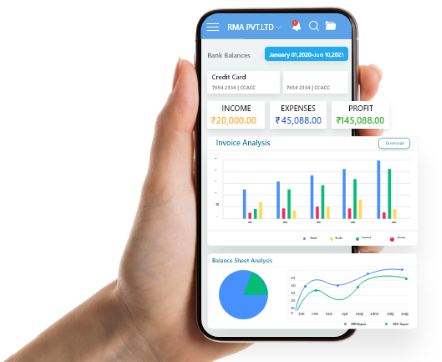
Try HostBooks
SuperApp Today
Create a free account to get access and start
creating something amazing right now!





